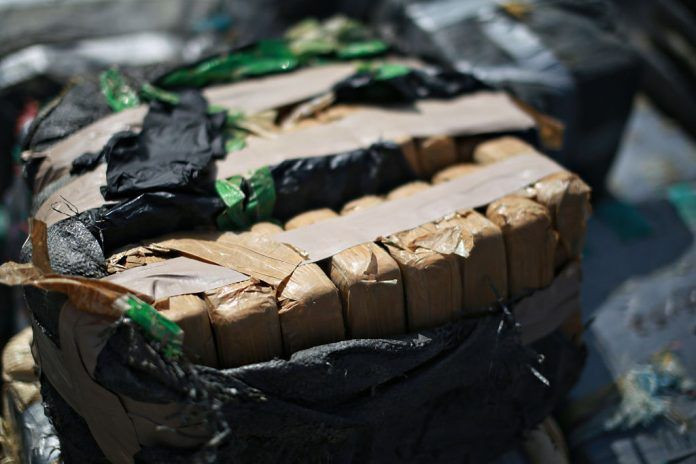
Three men survived for 27 long days and nights, as they voyaged across the Atlantic Ocean just under the surface of the crashing waves in a "narco-sub" known to have brought cocaine from South America to Europe.
The sub is 20 meters (65 ft) long, carbon fiber, and - remarkably - homemade.
The group, which included a former Spanish boxer and two Ecuadorean relatives, left the Brazilian rainforest and first traveled down the Amazon River. They had sardine cans, energy bars, and plastic bags that they used for toilet facilities.
They essentially had nothing else. Besides the three tons of cocaine, worth more than $150 million (£121 million), BBC reported.
However, this wasn't a profitable clandestine mission that was successfully completed. Several law enforcement organizations, notably the UK's National Crime Agency (NCA), had been following the sub's route as of late 2019. The men ran into difficulties and scuttled their vessel close to the Galician shore before being apprehended and imprisoned.
This piece of history in the fight against international drug trafficking is now a trophy in the car park of the Spanish police academy in Ávila.
However, it's not a rotting relic of a bygone battle: it's a symbol of a secretly growing phenomenon.
Another submarine, this time in the Galicia region, was just found last month off the Spanish coast.
In fact, it's believed that hundreds of handmade submarines have been launched toward Europe, which is the largest market for cocaine after the U.S. and is expanding quickly following a Covid pandemic collapse.
There are also rumors that there is a gigantic graveyard of cocaine submarines in the middle of the Atlantic Ocean, near the Canary Islands and the Azores, that were purposefully sunk once their cargo had been successfully unloaded.
But right now, in Spain, as part of the worldwide fight against human trafficking, the police are celebrating a significant triumph at their headquarters in Madrid.
"This is a very important operation," says Chief Commissioner Duarte. "It's the first time in Europe that we found as much as one and a half tonnes of base cocaine paste."
In fact, officers say it was the biggest lab turning raw coca paste into cocaine that they've found on the continent. But it's not just the size of the haul which is significant.
"This operation also confirms the links between Colombian and Mexican criminals that have joined Spanish gangs working in Spain," Chief Commissioner Duarte says.
Cocaine production rose by a third between 2020 and 2021, according to the UN drug agency. This was a record high and the largest year-over-year growth since 2016.
One place they're witnessing firsthand the surge in the supply of the drug is at the port of Antwerp in Belgium.
They found a record 110 tonnes of cocaine in 2022, which was so much that there weren't enough incinerators to burn it all down quickly. According to some estimates, only 10% of the cocaine entering the port is stopped, with the remaining 90% being distributed to the Netherlands and the rest of Europe, including the UK.
For one of Belgium's top investigative judges, Michel Claise, the cocaine industry has spiraled out of control.
The cocaine crisis in Belgium is the cocaine crisis in Europe, and the UN is now issuing a warning because opposing international gangs are cooperating more than ever. It claims that following their success on this continent, they would soon expand into Asia and Africa in search of untold riches.
© 2025 Latin Times. All rights reserved. Do not reproduce without permission.




